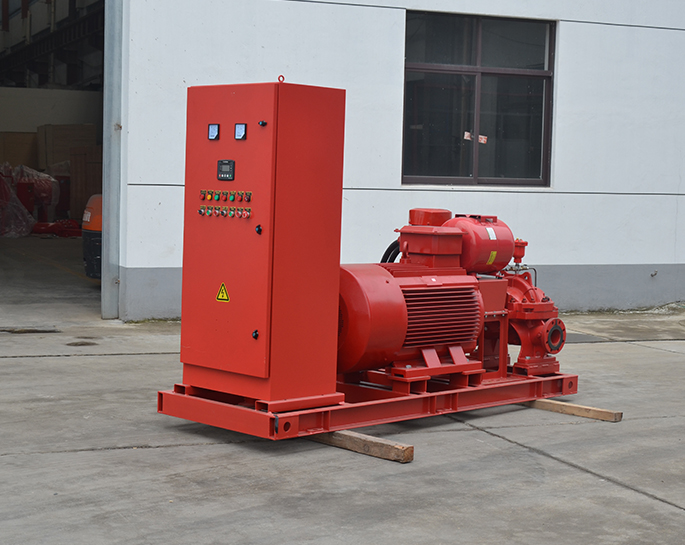Are there specific requirements for fire pump installations in areas prone to flooding?
Jan 26, 2024
Share:
Yes, there are specific requirements for fire pump installations in areas prone to flooding. These requirements are designed to ensure the reliability and functionality of fire pump systems in the event of a flood. Some key considerations include:
1. **Elevation of Fire Pump:**
- Fire pumps should be installed above the base flood elevation (BFE) to avoid damage from flooding. This elevation is determined based on historical flood data and local regulations.
2. **Waterproofing and Sealing:**
- All electrical components, controls, and wiring associated with the fire pump should be sealed or waterproofed to prevent damage from water exposure. This includes the pump motor, controllers, and any associated electrical panels.
3. **Flood-Resistant Enclosures:**
- The fire pump and its components may need to be housed in flood-resistant enclosures or buildings. These structures should be designed to withstand floodwaters and protect the pump equipment.
4. **Suction Piping Considerations:**
- The location of the fire pump's suction piping should be carefully considered to avoid potential inundation during flooding. Intake points should be positioned above expected flood levels.
5. **Ventilation and Drainage:**
- Adequate ventilation and drainage systems should be in place to prevent water from accumulating around the fire pump and its components. This helps to minimize the risk of damage and corrosion.
6. **Monitoring and Alarms:**
- Flood detection systems and alarms may be required to alert personnel if floodwaters are approaching the fire pump installation area. This allows for timely response and preventive measures.
7. **Regular Inspections and Maintenance:**
- Regular inspections and maintenance are crucial to ensure that the fire pump system remains in proper working condition. This includes checking for any signs of water damage, corrosion, or wear that could compromise the system's performance.
It's important to note that specific regulations and requirements may vary based on local building codes, fire codes, and environmental conditions. Consulting with local authorities and relevant standards, such as NFPA 20 (Standard for the Installation of Stationary Pumps for Fire Protection), is essential to ensure compliance with the applicable guidelines in a particular area.

1. **Elevation of Fire Pump:**
- Fire pumps should be installed above the base flood elevation (BFE) to avoid damage from flooding. This elevation is determined based on historical flood data and local regulations.
2. **Waterproofing and Sealing:**
- All electrical components, controls, and wiring associated with the fire pump should be sealed or waterproofed to prevent damage from water exposure. This includes the pump motor, controllers, and any associated electrical panels.
3. **Flood-Resistant Enclosures:**
- The fire pump and its components may need to be housed in flood-resistant enclosures or buildings. These structures should be designed to withstand floodwaters and protect the pump equipment.
4. **Suction Piping Considerations:**
- The location of the fire pump's suction piping should be carefully considered to avoid potential inundation during flooding. Intake points should be positioned above expected flood levels.
5. **Ventilation and Drainage:**
- Adequate ventilation and drainage systems should be in place to prevent water from accumulating around the fire pump and its components. This helps to minimize the risk of damage and corrosion.
6. **Monitoring and Alarms:**
- Flood detection systems and alarms may be required to alert personnel if floodwaters are approaching the fire pump installation area. This allows for timely response and preventive measures.
7. **Regular Inspections and Maintenance:**
- Regular inspections and maintenance are crucial to ensure that the fire pump system remains in proper working condition. This includes checking for any signs of water damage, corrosion, or wear that could compromise the system's performance.
It's important to note that specific regulations and requirements may vary based on local building codes, fire codes, and environmental conditions. Consulting with local authorities and relevant standards, such as NFPA 20 (Standard for the Installation of Stationary Pumps for Fire Protection), is essential to ensure compliance with the applicable guidelines in a particular area.


.png)
.png)

.png)


